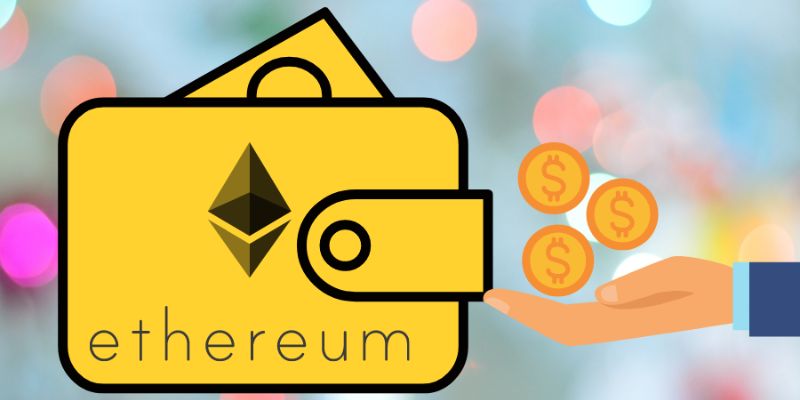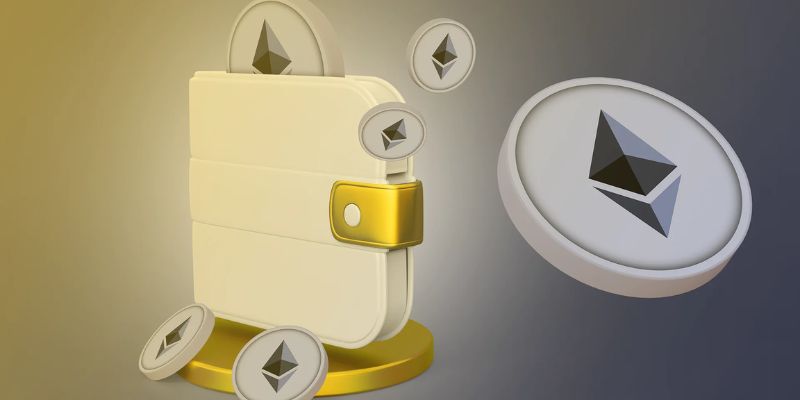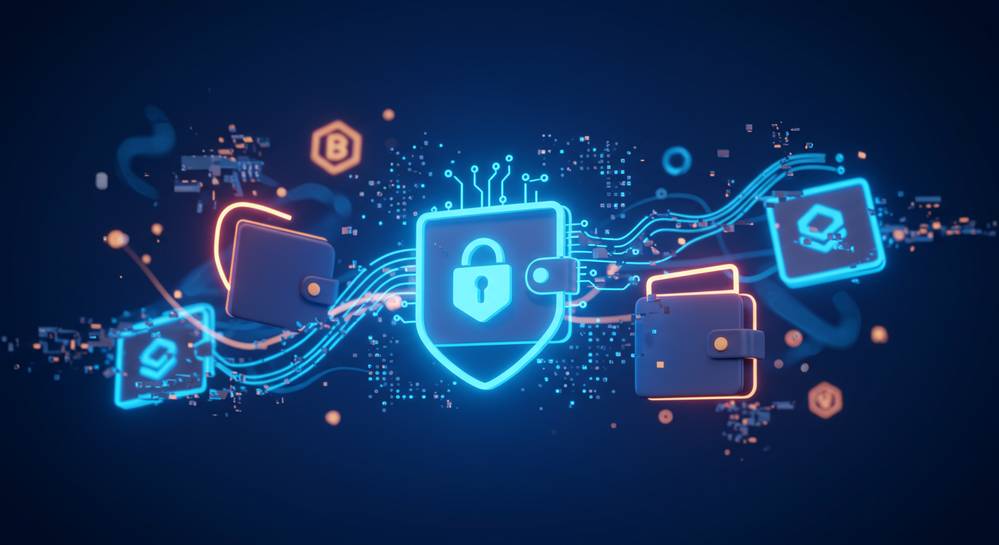Create an Ethereum wallet, and you wield the key to your own digital vault in the ever-evolving realm of cryptocurrency. No longer just for tech whizzes, securing and managing digital assets can be as simple as sending an email—if you start on the right foot. Understanding the diverse types of Ethereum wallets is your first step toward mastering the crypto space. Finding one that suits your needs isn’t just sensible; it’s crucial. Your journey to crypto mastery begins with knowing your options and establishing your very own secure sanctuary for your digital coins. Let’s dive in, ensuring your path is paved with knowledge and your assets are locked up tight.
Understanding Ethereum Wallet Types
Exploring the Variety of Wallet Options
Let’s dive into Ethereum wallet types. You have a few main choices: desktop, mobile, hardware, web-based, and paper wallets. Each has unique features and security levels. Picture your wallet as your personal crypto bank. You want it to be safe, right? Desktop wallets live on your computer. They offer good security but stay on one device. Mobile wallets go with you everywhere on your phone.
Want iron-clad security? Go for hardware wallets. They’re like Fort Knox for crypto. Web-based wallets are handy, always available online. But be careful; they can be risky. Paper wallets? Think old school. Your details are printed on paper. Good for storage, not so much for regular use.
Choosing the Right Wallet for You
Picking the right wallet is key. Ask yourself a few questions. How often will you access your Ether? Need high security? Will you use Ethereum apps? Your answers guide your choice. For everyday use, mobile or web wallets work well. They’re quick and user-friendly.
Heavy on security and storing lots of Ether? Hardware wallets are best. They keep your crypto offline. That means away from hackers. Paper wallets are also secure for long-term storage. But they’re not convenient for daily trades.
Now, don’t forget about private key management. That’s like having the only key to your safe. Lose it, and you’re out of luck. Always back up your wallet. Use recovery phrases to restore it if needed. Write these down and keep them safe! Think of two-factor authentication like a double lock. It adds an extra step but keeps your wallet way safer.
Finally, consider a multi-signature wallet if sharing control with others. It’s like needing two keys to open a bank vault. Multiple people must agree to spend the Ether. This keeps everyone honest.
So, which wallet fits you best? Compare, choose, and always prioritize safety. Set up your Ethereum wallet with care, and embrace your crypto journey with confidence.

Setting Up Your Secure Ethereum Wallet
Generating Your Wallet Address and Private Key
To dive into crypto, you first need an Ethereum wallet. Let’s set one up. Start by choosing a wallet type. There’s a bunch—like mobile, desktop, hardware, web-based, and paper wallets. Think of what fits your daily life. To create your wallet, you’ll generate two things: a wallet address and a private key.
Your wallet address is public, like your email. You’ll share it to receive Ethereum payments. Your private key is secret, like a password. Never share it. It guards your crypto and lets you send Ether (ETH). For the address and key, most wallets give you a guide. Just follow each step carefully.
Implementing Security Features
Once your wallet’s set up, boost its security. First, make sure your password is tough and unique. Then, write down your recovery phrases. These words can bring your wallet back if something goes wrong. Keep them safe like a treasure. No jokes here—they’re the key to your crypto kingdom.
Next step, turn on two-factor authentication. It’s like having an extra lock on your door. Some wallets offer multi-signature options. This means more than one person must approve a transaction. Good for teams and extra security.
Always backup your wallet. It’s like having a spare key to your house. If you use a mobile or desktop wallet, keep your software up to date. This helps fight off hackers looking for old flaws.
Remember, your crypto’s safety is in your hands. Take these steps seriously and sleep sound knowing your Ethereum’s secure.

Safeguarding Your Ethereum Investment
The Importance of Backup and Recovery Protocols
“Always back up your Ethereum wallet.” This is key for keeping your Ether safe. Your backup needs two main things: encryption and a recovery phrase.
To start, use strong encryption. Encryption turns your private key into code that only your password can unlock. Store this key where attackers can’t find it.
Next, write down your recovery phrase. This phrase helps you recover your wallet if you lose it. You must keep this phrase safe and private.
Remember, losing your recovery phrase can mean losing your Ether. Write it down on paper and store it as if it’s gold! Placing it in a safe or a secure place at home is a great move.
Multi-Factor and Multi-Signature Solutions
Let’s boost your wallet’s safety.
For multi-factor authentication (MFA), use something you have, like your phone, and something you know, like your password. This extra step means even if someone knows your password, they still can’t access your wallet without your phone.
Now, consider multi-signature wallets. These need more than one key to approve a transaction. It’s like having several locks on a safe. With this, even if one key is stolen, your Ether stays safe.
Think of it: Tech that requires the agreement of different people to make big moves. It keeps your investment secure and shared, with built-in checks and balances.
By using both MFA and multi-signature solutions, you create a mighty shield for your Ether. Always think like a security expert. This keeps your digital coins as safe as can be.
So, when choosing your Ethereum wallet, look for options that support both MFA and multi-signature features. Trust me, it’s a small effort for a big peace of mind.

Executing Transactions and Managing Ethereum Assets
Navigating the Ethereum Network for Sending and Receiving Funds
To send or get funds on the Ethereum network, you’ll first need a wallet. This is like a digital bank account for your Ether and tokens. Let’s get into how you manage your Ethereum assets and carry out transactions.
Creating an Ethereum wallet is your first step. Pick from many types: mobile, desktop, hardware, web, or paper. Each type meets different needs. A good Ethereum wallet setup guide will cover them all. Check one out to see which kind suits you best.
When you create an Ethereum wallet, you get a public address and a private key. Think of your public address like your home address, where anyone can send Ethereum payments. Your private key is like your house key. It must stay safe and only with you. If someone else gets it, they can take your Ether.
Now, how do you send Ether? You’ll enter the recipient’s public address, choose the amount, and confirm the transaction. When you receive Ethereum, share your public address. The sender will do the same steps on their end. All transactions need Ethereum gas fees. These are like postage stamps for the network to process your transactions.
Aligning Wallet Choice with Ethereum dApps and Smart Contracts
Your Ethereum wallet does more than store Ether. It connects with decentralized apps and smart contracts. These are programs that run on the Ethereum blockchain. Your wallet choice should align with the dApps you plan to use. For instance, some wallets are made to work well with specific dApps.
If you’re all about dApps, choose a compatible wallet. This means it can talk to the right dApps without fuss. Wallet compatibility is key here. It’s a bit like picking a smartphone that has the apps you like.
For smart contract fans, you need a wallet that can handle them. Smart contracts are like automatic rules for your Ethereum transactions. When the contract terms are met, the transaction happens with no extra steps. This is super handy but needs a wallet that can manage the complexity.
To wrap this up, to manage your Ethereum holdings and do transactions, get an Ethereum wallet that fits your use. Secure it well with things like tough passwords, backup plans, and maybe two-factor authentication or multi-signature setups. Remember to handle your private key like a master key to your digital treasures. Take care of your wallet, and it will take care of your Ethereum journey.
As we wrap up, let’s remember the essentials. We explored wallet types for storing Ethereum and how to pick the right one. Then, we learned to set up a wallet safely, focusing on creating a secure address and key. We emphasized backing up your wallet and security with extra steps like multi-factor authentication. Finally, we covered how to manage and move your Ethereum, making sure your wallet works with dApps and smart contracts.
To sum it up, keeping your Ethereum safe is all about the right start and smart steps. Choose a wallet that fits your needs, set it up with strong security, back it up, and use added protection. Remember, how you handle your assets can make all the difference. Stay secure and you’ll be ready to navigate the Ethereum network like a pro!
Q&A :
How do I create an Ethereum wallet?
Creating an Ethereum wallet is a straightforward process. First, decide on whether you want a hardware wallet, mobile app, desktop application, or web-based service. Then, follow these general steps:
- Select a reputable Ethereum wallet provider or application.
- Download and install the app, or sign up for the service.
- Set a strong password to protect your wallet.
- Back up your wallet with the provided seed phrase or private key.
- Store your backup and private keys securely.
- Your wallet is now ready to send, receive, and store Ethereum and ERC-20 tokens.
Remember to perform due diligence when choosing a wallet, prioritizing security, and ease of use.
What is the safest way to create an Ethereum wallet?
The safest way to create an Ethereum wallet is to use a hardware wallet. Hardware wallets such as Ledger Nano X or Trezor Model T provide cold storage for your funds, meaning they remain offline and out of reach from online threats. Ensure that:
- You purchase the hardware wallet from an official or verified retailer to avoid tampering.
- Set up the wallet according to the manufacturer’s instructions.
- Keep your recovery seed phrase in a secure and private location.
- Never share your seed phrase or private key with anyone.
This extra layer of security can significantly reduce the risk of hacking or theft.
What are the best practices for securing my new Ethereum wallet?
After creating an Ethereum wallet, following best practices to secure it is imperative. Here are some essential tips:
- Always set a strong, unique password.
- Write down your seed phrase or recovery key and store it in a secure and private place.
- Use two-factor authentication if the service supports it.
- Regularly update your wallet software to the latest version.
- Be wary of phishing sites and never enter your seed phrase or password into questionable websites.
- Consider using a hardware wallet for large amounts of Ether for increased security.
By consistently adhering to these practices, you can greatly minimize the risk of losing your assets.
Can I create multiple Ethereum wallets, and why would I want to?
Yes, you can create multiple Ethereum wallets, and there are several reasons why you might want to do this:
- Organization: Separate wallets for personal use, business transactions, or investment purposes.
- Privacy: Using different wallets for various transactions can help maintain privacy.
- Security: Diversifying funds across multiple wallets can minimize the impact of a compromised wallet.
- Testing: Developers or users might need separate wallets for experimenting with apps or services on the testnet.
When managing multiple wallets, ensure that you securely back up and store the details for each one.
What should I do if I forget my Ethereum wallet password or lose my seed phrase?
If you forget your Ethereum wallet password or lose your seed phrase, the options to regain access to your funds may be limited, as the Ethereum network prioritizes security and does not hold or recover your credentials. However, here’s what you can try:
- If you’ve only forgotten your password but still have your seed phrase, you can often restore your wallet using the seed phrase and then set a new password.
- Some wallets may offer a password recovery feature; check if yours does.
- If you’ve lost your seed phrase and don’t have a recovery option, it’s vital to remember any possible locations or storage you may have used to keep a backup.
Unfortunately, without the seed phrase or private key, accessing the wallet’s contents could be impossible. It’s a stark reminder of the importance of backing up and securely storing your wallet information.



